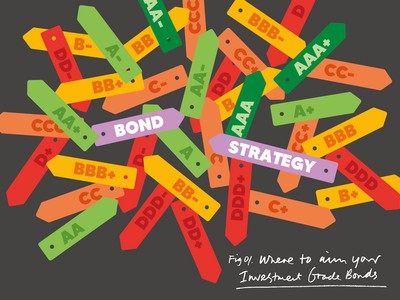We are currently progressing through a typical boom-bust cycle at tremendous speed. Central banks were slow to lift interest rates, and this, compounded by shocks such as the war in Ukraine, has required them to play catch-up. For central banks, tackling inflation remains the key objective, but they seem intent on hiking rates into a big growth downturn.
Cycles can be confusing because not everything turns at once, so conflict often exists between data. But to be clear – leading economic indicators have been flashing red since last year, and coincident data (describing the pulse of the economy today) is now sending a similar message. While that is not good news for the economy, it offers a good environment for sovereign bonds and high-quality investment-grade corporate debt, at a time when the yields on offer here have improved significantly. Historically, buying high quality bonds when central banks reach the last rate hike has been a winning strategy.
Business cycle framework
Many commentators seem transfixed on indicators that lag the economic cycle such as today’s inflation, unemployment, and corporate default data. These look at the economy through the rear-view mirror and tell us little about where we are headed.
Our framework of the business cycle seeks to identify economic variables as leading, coincident, or lagging. Leading indicators signal where the economy is headed on a 6-12 month horizon – variables such as real (inflation-adjusted) money supply growth, the rate of change of bond yields, housing and the shape of yield curves. These are plumbing the depths seen in previous downturns. Coincident indicators are also at stall speed. Looking at data points that the National Bureau of Economic Research (NBER) use to define a US recession, the path followed in this cycle looks remarkably similar to that seen in the run up to previous recessions.
Cycles can be confusing because not everything turns at once, so conflict often exists between data.
The current consensus view is of a strong US labour market but lead indicators such as voluntary versus involuntary part time work confirm we are near a tipping point. This is corroborated by the decline in job openings – 18% down from their rolling 12-month peak in the US; a decline of 15% is a sufficient condition historically for an employment downturn. While the UK cycle is lagging the US, vacancies have declined by 17% from their peak.
On the inflation side, commodity and freight prices have tumbled this year, and the collapse in broad money growth also suggests inflation is set to moderate. Central banks tend to focus on core inflation i.e. excluding volatile items such as energy. Looking through history, core inflation does not move in a separate cycle – it has tended to follow headline inflation, but with a lag.
Opportunities in bond markets
We believe central banks are now at or near terminal rates in the US / UK, and based on history, rates do not stay at these highly restrictive levels for long. As such, we believe opportunities exist within government bonds, primarily in the US, alongside countries with high sensitivity to variable rate mortgages and the housing cycle (e.g. Canada, Australia and Sweden).
In this environment, we believe there is little to be gained from stretching too far down in credit quality. Sub-investment grade (high yield) corporate bonds are pricing in a soft landing and could be vulnerable in a recession. There are some valid arguments that the high yield market today is better quality than in previous downturns, as the aggressive financing of more marginal businesses has been in the secured loan and/or private credit markets. A sell-off in high yield corporate bonds could potentially create a buying opportunity, but we see no reason to be an ‘early hero’ when the risk-adjusted potential is appealing today in investment grade.
Issued in Europe by Janus Henderson Investors. Janus Henderson Investors is the name under which investment products and services are provided by Janus Henderson Investors International Limited (reg no. 3594615), Janus Henderson Investors UK Limited (reg. no. 906355), Janus Henderson Fund Management UK Limited (reg. no. 2678531), Henderson Equity Partners Limited (reg. no.2606646), (each registered in England and Wales at 201 Bishopsgate, London EC2M 3AE and regulated by the Financial Conduct Authority) and Janus Henderson Investors Europe S.A. (reg no. B22848 at 2 Rue de Bitbourg, L-1273, Luxembourg and regulated by the Commission de Surveillance du Secteur Financier).
John Pattullo
Co-Head of Global Bonds at Janus Henderson Investors
Illustration by Adam Mallett




